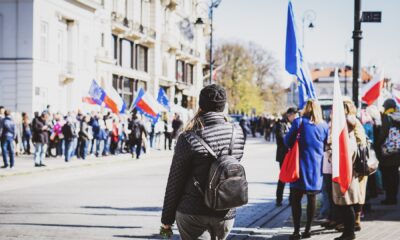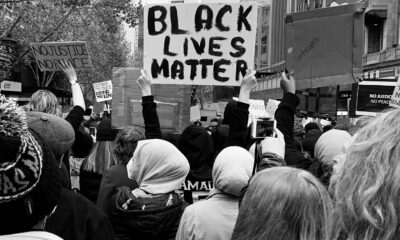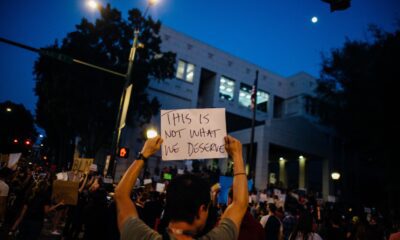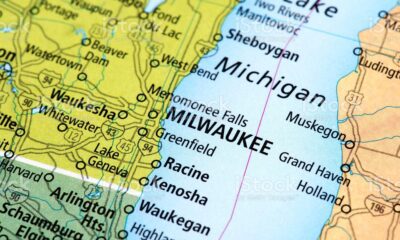Is There Ever a Time for Censorship?
Whilst coronavirus continues to dictate our daily lives, protestors line the streets of Britain, as well as the UK to protest for Black Lives Matter and against the protests that are tearing down statues across the UK.
Protests broke out against the protests that removed the statues throughout London. These protests are the aftermath in light of what happened to George Floyd.
George Floyd died on the 25th May at the hands of police brutality in Minneapolis, USA.
There have been widespread protests across both the United States and the UK.
The death of Floyd has pulled the trigger on racism within both countries, and incited a new conversation between the black and non-black communities.
People are speaking out about their experience of racism. This is not just the black community, but the whole BAME (Black, Asian, Minority, Ethnic) community.
This is opening up a conversation that has long been needed, of people’s relationship to those of another race.
Censorship within the Entertainment Industry
The irony is, whilst the black community speak up, the non-ethnic community is facing censorship. Chris Lilley, the creator of ‘Summer Heights High’ has been censored from Australian Netflix.
It is a difficult conversation to broach when the subject involves stereotyping and entertainment. This is especially true when it concerns comedy. Lilley manages to create his depiction of Australian life within a high school, imitating the characters he deems to portray it.
Chris Lilley has three main characters in Summer Heights High: Jai’me (public school girl), Mr. G (narcissistic school teacher) and Jona from Tonga. Chris Lilley plays all three characters.
The series has been cancelled due to Lilley’s depiction of ‘Jona from Tonga’.
It is of no doubt that ‘Summer Heights High’ is inappropriate for different reasons, but it does not stop it from being funny. It is funny, because those who push boundaries-do tend to be funny. It does not necessarily have anything to do with race either, as stereotypes are being made fun of-across every race.
It is funny because someone is daring to talk about them.
There is also an argument for the pushing of boundaries, for if we did not have that; there would be no reform.
One of Lilley’s characters, Jai’me (public school girl) challenges the notion of white privilege. She is the main character, alongside narcissistic Mr. G.
What is happening within the streets of Britain at present, is essentially ‘a pushing of boundaries’.
I think the conversation needs to centre around ‘what’ racism is.
What does it actually mean to be racist?
There seems to be a real disparity in this. Children nowadays are growing up, and being taught that any kind of ‘indifference’ is racism. They are therefore calling out anything to be racist, which has implications of its own.
Children are most likely being taught by adults on racism, who do not understand racism. And so they are instead taught ignorance.
The majority of stereotyping within the series is aimed at the ‘white’ stereotypes within the series. However, the unsurprising connotations of including such a character as Jona, has inevitably been questioned.
This is understandable, yet, what about the other two characters within the series? Is Lilley being racist to white people by depicting two white stereotypes?
Again, the discussion on what ‘racism’ actually is, needs to happen.
Is it right to have censored such a show?
I love ‘Summer Heights High’. It makes me laugh, out loud, and I appreciate it for what it is. If we censor all stereotypes that happen to have a different colour of skin, I think the point is being missed.
Life is funny because of our differences.
There is an argument that if BAME stereotypes were to be removed in its’ entirety from all corners, would it only be acceptable to make fun of white people?
Does this end racism?
Or does it create it?
Removing BAME members from comedy, suggests they are no longer part of the community.
It also may reinstate that there is a problem time and time again, because it is being avoided, rather than being dealt with.
There is racism within Britain, and there is a conversation that needs to happen within all institutions.
Is it right to censor reporting of the removal of statues?
Certainly not. It is what is happening right now within our culture, and it needs to be discussed, as it is.
Is it right to censor the lives of the men who partook in the slave trade?
It is in no doubt how emotive a statue of a slave trader must be. The people who tore those statues down, tore down the institutional racism, which is at the heart of the inequality within the United States, but sadly also the United Kingdom.
I understand from a humble perspective, what it must be like to face racism of which, most goes unnoticed, because it is carried within the sub-conscious minds of us all.
Jamelia, the black British singer, was on BBC Breakfast recently. She tells the story of being pulled over by the police, whilst in her car, for no other reason than the ‘make’ of it, she claims. This is a weekly occurrence.
There are also statues within London of figures who led the act to abolish slavery, William Wilberforce was one of the main politicians who did so, with the eventual abolition of slavery in 1833.
Yet, this did not stop ‘No Blacks, No Irish, No Dogs’, a written statement within Britain, being spouted in every nook and cranny imaginable, from flat lets to pub windows; and this was only in the 1960’s.
There have been callings for reform regarding these statues. It is suggested the statues remain, but plaques are instead used to describe who these people are, and both sides of the story.
I think this is what is important. I think there is only ever small cause for censorship. This is a time that needs every story to come to light. If both sides of the story are conveyed, with the slave traders who have sat so prominently for so long, in the streets of Britain, then there is a chance to understand and learn from it.
If these stories are removed, then it will just be buried, but it will not disappear.
Is it Right to Censor Little Britain?
On the 5th of June, ‘Little Britain’, the British sketch comedy was taken off Netflix, deemed not responsible in the aftermath of George Floyd.
Within the show, both creators depict BAME characters, as well as white characters.
If Little Britain retold the story, without any BAME characters, the white stereotypes would be the only ones left.
Is this right? It could no longer be called Little Britain.
Where it is completely understandable that this might be offensive to some people, the same could be said for the white counterparts.
Stereotypes are a fact of human nature, behavioural patterns which can be good or bad, they are simply how humans relate to each other.
Is it not human nature to laugh at each other?
If this is censored, what do we have left?
If Little Britain negatively affects the way an individual sees another, in relation to the colour of their skin; then it is right it was removed.
However, I think most people are able to rise above stereotypes, and see them just as that.
Does the insinuation of another race and their stereotypes, affect the way Matt Lucas and David Walliams interact with these very communities?
I think this is the real indicator of whether someone is racist or not.
The problem lies with the lack of BAME representatives throughout the broadcasting world. Stereotyping of white communities does not affect white relations within the general population, because there is the disparity in other representations.
When there are so few positive BAME representatives, what do people have to compare to?
In light of this matter, I think it was right to censor Little Britain for the moment, it is too sensitive a time, and changes need to be made, before the subject can be broached constructively.
This is the heart of the conversation that needs to happen.


 Featured2 years ago
Featured2 years ago
 Featured3 years ago
Featured3 years ago
 Featured2 years ago
Featured2 years ago
 Featured4 years ago
Featured4 years ago
 Featured3 years ago
Featured3 years ago
 Featured5 years ago
Featured5 years ago
 Featured2 years ago
Featured2 years ago
 Featured3 years ago
Featured3 years ago





























